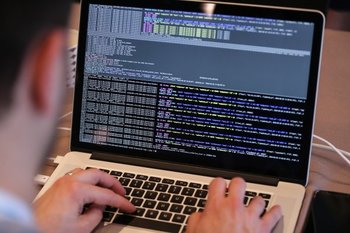By the beginning of October 2014, two full months after the World Health Organization (WHO) declared an Ebola outbreak emergency in West Africa, the international response was insufficient, uncoordinated, and unable to curb the spread of infection in the worst hit countries. In Liberia, Guinea, and Sierra Leone, WHO reports indicated nearly 10,000 confirmed cases and more than 4,800 confirmed deaths. The current WHO situation report from December 31 shows a total of more than 20,000 cases and nearly 8,000 deaths.
Amidst this worst-ever Ebola outbreak in modern history, the WHO has been criticised heavily for a less than adequate response. In an internal draft report leaked to the Associated Press in mid-October, the organisation itself recognised lack of communication between their field operatives and headquarters in Geneva, bureaucratic red-tape preventing thousands of dollars in aid from being delivered, and the inability to obtain visas for doctors to gain access to some of the worst hit areas led it to fail to see “some fairly plain writing on the wall”. Keen observers have pointed out fragmented funding and divergent interests within WHO’s member states.
Political and economic issues aside, the criticisms brought against the WHO all have one thing in common: they are information management problems. Luckily, digital humanitarians have stepped in to help.
Who are digital humanitarians?
By leveraging new and re-envisioned communication technologies, crowd-sourced methods, and innovative mapping platforms, digital humanitarians - also known as “crisis mappers” or “volunteer and technical communities” (V&TCs) - are often able to improve the data collection, analysis, communication, and visualisation processes used by traditional humanitarian organisations.

Photo credit: Flickr/ World Humanitarian Summit
This contributes to early warning and early response efforts, and has gained relevancy in many aspects of the humanitarian space (preparedness, response, recovery), and empowering affected communities in the process.
One example is the Standby Task Force (SBTF), who, according to their website, leverage the power of the crowd and open-source software to facilitate organised digital volunteers to remotely “process and output geographically tagged crisis information” in order to “effectively assist crisis affected communities.”
Graduate students in my Crisis Mapping for Humanitarian Action class (taught through the Geographic Information Technology Master’s program at Northeastern University) recently joined the SBTF network to provide support for their Phase II Ebola response to verify, update, and geo-tag information about the status, capacity, strength, and current use of existing and upcoming medical centers, hospitals, and clinics in Liberia, Guinea, and Sierra Leone. The results are, this very minute, being used to provide a clear and accurate picture to those on the ground battling the epidemic: U.N. agencies, humanitarian organisations like Médecins Sans Frontières (MSF) and the British Red Cross, and the host country ministries of health.
While Phase I focused on a collaboration with Net Hope to collect and share baseline data about affected countries via the Open Humanitarian Data Repository, Phase II saw the organisation joining forces with UN Office of Coordination for Humanitarian Affairs (UN OHCA) to contribute to OCHA’s Humanitarian Data Exchange (HDX) Ebola dashboard, an open repository of the latest Ebola crisis information.
The data that has been put together gives, to my knowledge, the most comprehensive picture of treatment facilities and community care centres available. This will surely help to overcome some of those information management problems that have plagued WHO. I’m told the agency, through its Geographic Information Systems (GIS) team, is using it in their response, and through the Humanitarian Data Exchange, UN OHCA is encouraging other agencies to do the same.
Partnerships between digital and traditional humanitarians
To be fair, there are major challenges that organisations seeking to leverage new technologies and non-traditional data sources and methodologies - like the SBTF - face. Micro-tasking open-source data and social media by volunteer organisations can provide timely and cost efficient data collection and analysis but requires the training and professionalism of traditional humanitarian organisations in order to achieve accurate and verifiable results. My own class, consisting of about 15 graduate students, had to overcome a steep learning curve.
Other instances of major challenges include the use of satellite imagery and unmanned aerial vehicles (UAVs) by non-state actors. This brings with it military-grade intelligence, without the diplomatic tools and legal frameworks necessary to deal with issues of potential violations of sovereign airspace.
Meanwhile, using algorithms to mine meta-data from Twitter and personal call detail records (CDRs) brings with it both real time holistic opportunities but also privacy issues and the potential to empower some segments of society at the expense of others. The list goes on.
But the community – through training, learning, and evaluation, careful roll-out of tools, simulated learning environments, and a host of other initiatives such as conferences, hack-a-thons and academic programs – is coming together and partnering up with traditional humanitarian organisations to help answer questions about how best to leverage new technologies and non-traditional data sources and methods for response efforts. The SBTF Ebola Phase II digital deployment will no doubt go down as one of these efforts.
For its part, the Standby Task Force is currently providing remote based support and guidance, developing data products as requested by field teams, and working out open data standards. They’re also gearing up for a potential Phase III deployment to build on Phase II data which will include creating printable sets of maps and information and engagement with volunteers on the ground to “create a volunteer-driven data collection never before experienced in this part of the world,” according to their blog.